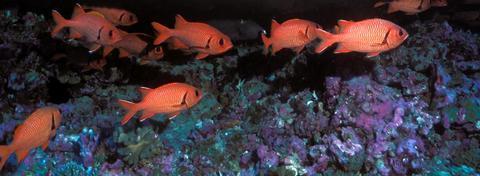Baker Island National Wildlife Refuge
Fish and Wildlife Service.
Baker Island National Wildlife Refuge was established in 1974 and lies just north of the equator in the central Pacific Ocean and about 1,830 nautical miles southwest of Honolulu.
On January 6, 2009, the Pacific Remote Islands Marine National Monument was established, which includes Baker Island National Wildlife Refuge within its boundaries.
The refuge includes 410,184 acres, of which 531 acres are terrestrial and 409,653 acres are submerged. Except for a shallow reef surrounding the island, most of the submerged habitat is deep and relatively unexplored.
Baker Island borders along an ancient coral reef and massive extinct volcano that emerges from the deep ocean floor. The equatorial undercurrent pushes nutrient-rich waters up into the sunlit zone, thereby increasing marine productivity that many marine species benefit from. This important phenomenon may be limited only to Howland, Baker, Jarvis Islands, and a few other islands in the Pacific because of their location on the equator.
Baker Island is uninhabited, and entry is by permit only to U.S. Fish and Wildlife Service personnel, scientists, and researchers. Baker Island is accessible only by ship.
Directions
The island is uninhabited, and entry is by permit only. U.S. Fish and Wildlife Service personnel visit Baker about every 2 years, though occasionally scientists and researchers team up to share transportation costs to the island more frequently. From Honolulu, it is only accessible by an 8-day ship voyage.
